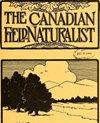Population genetic structure of the provincially endangered mainland Eastern Moose (Alces americanus americanus) in Nova Scotia, Canada
Q4 Agricultural and Biological Sciences
引用次数: 0
Abstract
Eastern Moose (Alces americanus americanus (Clinton, 1822)) on mainland Nova Scotia (MNS) are declining and experience limited immigration across the Isthmus of Chignecto from the larger population in neighbouring New Brunswick. Provincially Endangered, the recovery strategy for MNS Moose involves mitigating various threats that may lead to local extirpation. We examine genetic diversity of MNS Moose using microsatellite markers and mitochondrial (mtDNA) control region sequences. Genetic similarities with the Alces a. americana population in New Brunswick and the introduced Northwestern Moose (Alces americanus andersoni (= Alces alces andersoni) Peterson, 1952) population on Cape Breton Island are also analysed. Observed heterozygosity for microsatellites for MNS Moose was low and there was also evidence of limited gene flow between Nova Scotia and New Brunswick across the narrow Isthmus of Chignecto that connects these provinces. Consistent with relatively recent colonization of North America by Moose dispersing across the Bering Land Bridge <15 000 years ago, mtDNA haplotypes of MNS Moose were identical or extremely similar to haplotypes found across North America. However, mtDNA diversity was lower in Nova Scotia and New Brunswick than in more central regions of the species’ range. Active measures to maintain habitat that promote connectivity across the Isthmus of Chignecto would likely be valuable for Moose in terms of maintaining genetic variation in the region and reducing inbreeding.加拿大新斯科舍省濒危大陆东方驼鹿(Alces americanus americanus)的种群遗传结构
新斯科舍省大陆(MNS)上的东方驼鹿(Alces americanus americanus (Clinton, 1822))数量正在减少,从邻近的新不伦瑞克省较大的种群跨越奇格涅克托地峡(Isthmus of Chignecto)迁入的数量有限。MNS 麋鹿已被列为省级濒危物种,其恢复战略包括减轻可能导致其在当地灭绝的各种威胁。我们使用微卫星标记和线粒体 DNA(mtDNA)控制区序列研究了 MNS 麋鹿的遗传多样性。我们还分析了与新不伦瑞克的美洲驼鹿(Alces a. americana)种群和布雷顿角岛引进的西北驼鹿(Alces americanus andersoni (= Alces alces andersoni) Peterson, 1952)种群的遗传相似性。观察到的 MNS 麋鹿微卫星杂合度很低,而且有证据表明,新斯科舍省和新不伦瑞克省之间跨越连接这两个省的狭窄的奇格涅克托地峡的基因流动很有限。驼鹿在北美的殖民时间相对较短,跨越白令陆桥的时间小于 15000 年,与此相一致的是,MNS 驼鹿的 mtDNA 单倍型与北美各地发现的单倍型相同或极为相似。然而,新斯科舍省和新不伦瑞克省的 mtDNA 多样性低于该物种分布区的中部地区。采取积极措施维护栖息地,促进整个奇格涅克托地峡的连通性,可能对麋鹿保持该地区的遗传变异和减少近亲繁殖很有价值。
本文章由计算机程序翻译,如有差异,请以英文原文为准。
求助全文
约1分钟内获得全文
求助全文
来源期刊

The Canadian Field-Naturalist
Agricultural and Biological Sciences-Ecology, Evolution, Behavior and Systematics
CiteScore
0.60
自引率
0.00%
发文量
54
期刊介绍:
The Canadian Field-Naturalist (ISSN: 0008-3550) publishes scientific papers by amateur and professional naturalists and field biologists, reporting observations and results of investigations in any field of natural history, provided they are original, significant, and relevant to Canada.
 求助内容:
求助内容: 应助结果提醒方式:
应助结果提醒方式:


